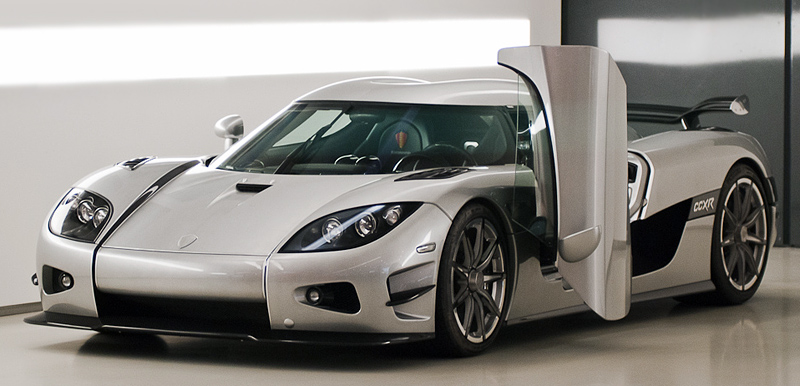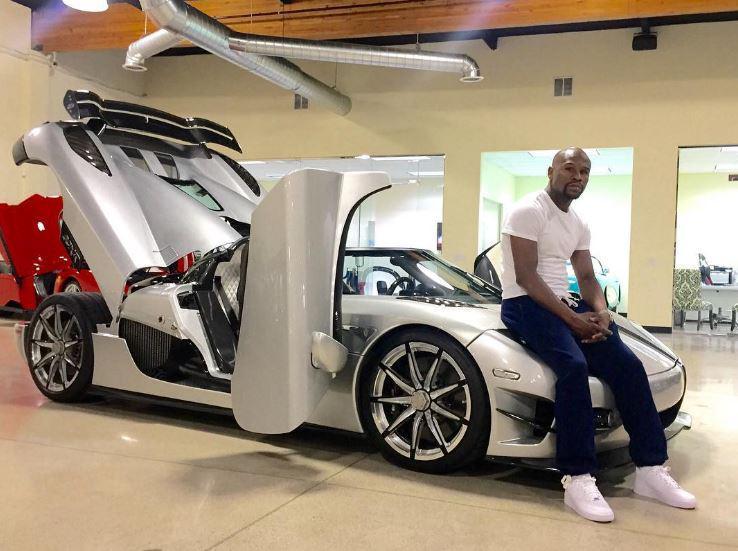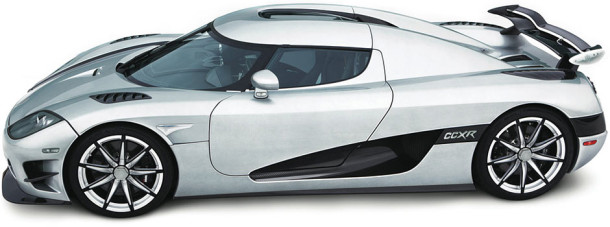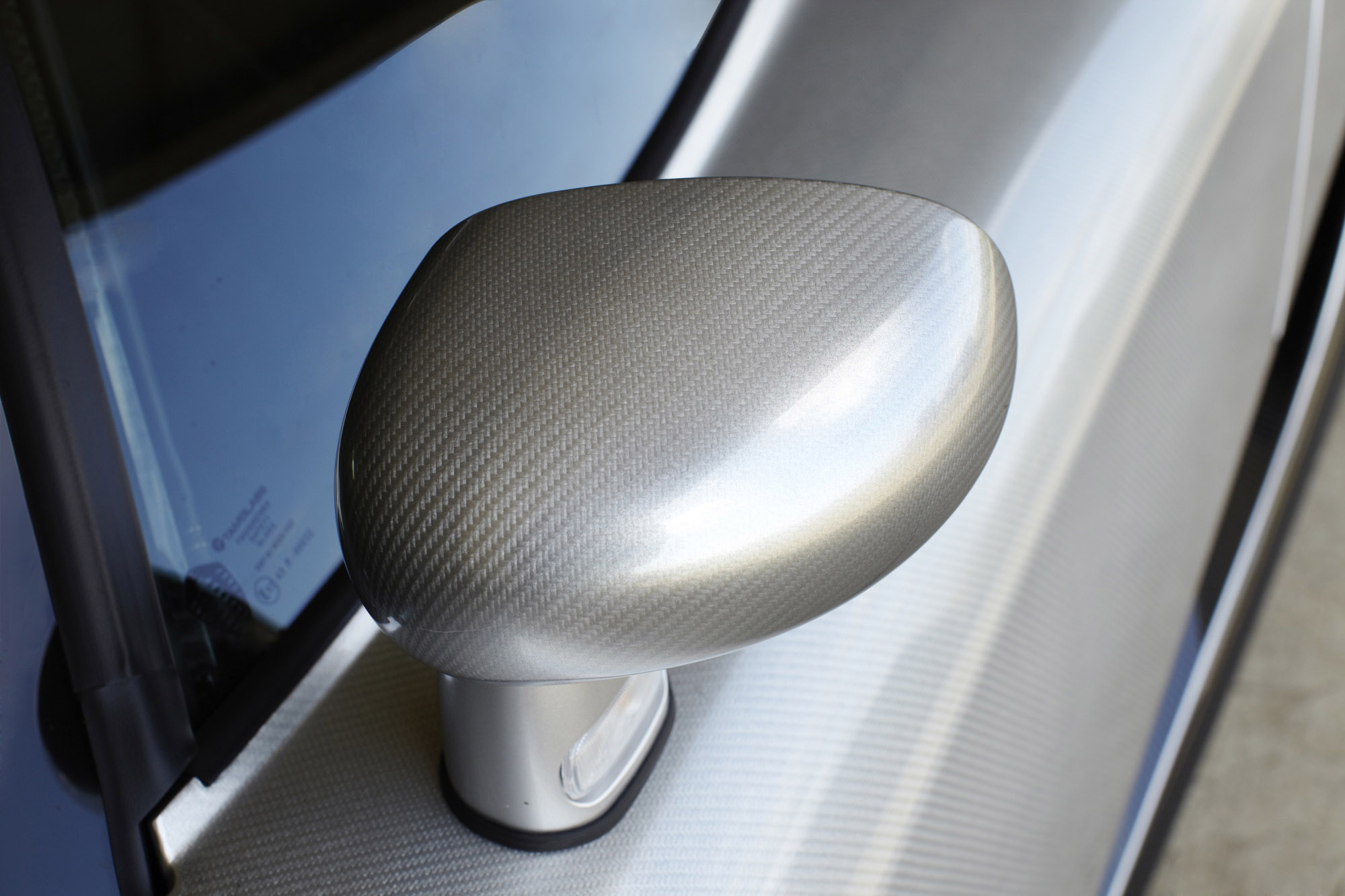2010 Koenigsegg CCXR Trevita
Racking up World Records
At 22 years old, Christian pursued his dreams in building the world’s best super-car and Koenigsegg Automotive was born. Since 1994, his firm has worked on producing the best super-car the world has seen, first starting with the ‘CC’.
Next was racking up world records with the CCR, the next iteration in this madman’s portfolio. The CCR had an output of 806hp and achieving a new top speed of 387.86 km/h. Those records have now been broken by the Bugatti Veyron, but it took a company many years to go beyond it since Koenigsegg set the record around 2005.
When Koenigsegg Almost Killed The Stig
After that, they keep pushing the boundaries, this time with the CCX and the most famous lap in early Top Gear. For the non-gear heads, it’s a popular car show that features supercars and an awesome mysterious figure named ‘The Stig’, testing these cars around a track. The CCX famously sent The Stig off-course and said it was a handful. He even recommended it have a rear spoiler to add more downforce and successfully did a clean lap after Koenigsegg modified the CCX as requested. It held the fastest lap time for almost 7(!) years.
Shine Bright Like a Diamond
But enough about the past. It’s time to think about the future: The Koenigsegg CCXR Trevita.
The special edition CCXR got the name ‘trevita’ because of the special, proprietary white carbon fibre weave. In the early days of carbon fiber manufacturing, weaves only came in black. It wasn’t until Koenigsegg was able to develop this new type of weave, producing a silvery-white sheen. ‘Trevita’ is Swedish for ‘three whites’, originally intended for a production of three white CCXR. Due to the complex production and the extensive time required to create the white carbon fiber weave, only two examples were built making the Trevita one of the most exclusive Koenigsegg created.
Two Blowers Are Better Than One
Inside the Trevita lies a terrifying Swedish brute. Developed in-house, the CCXR Trevita has an all-aluminum 4.8L dual-overhead cam V8 engine, with twin superchargers bolted on, producing an eye-popping 1018bhp @ 7000rpm on E85 fuel. The torque figure is equally as scary, producing 796ft/lb of torque.
With a top speed of 410+kph (254+mph), the Trevita can reach 0-100kph (0-62mph) in 2.9 seconds! Coupled with a paddle shift gearbox, the Trevita is a hypercar that can make mincemeat of out a McLaren, Lamborghini, or a Ferrari.
The interesting part of the setup personally, is the selection of superchargers vs. turbochargers. In the world of forced induction, there’ll always be two sides and with everyone going turbochargers, you get a lot more potential horsepower for little displacement. Superchargers are more complex and usually requires more tuning to reach maximum potential. The complexity equates to less lag, and hearing that distinct supercharger whine at higher RPMs.
Innovation, Exclusivity, and Awesome Doors

Known by the founder as dihedral synchro-helix actuation system, that mouthful phrase translates to an awesome opening mechanism that’s slightly outlandish but jaw-dropping at the same time.
Insanity in 2.9 Seconds

Specs & Performance
| type | Series Production Car |
| built at | Ängelholm, Sweden |
| body stylist | Christian von Koenigsegg |
| coachbuilder | Koenigsegg |
| production | 3 |
| price $ | $ 2,210,000 |
| price £/td> | £1,410,000 |
| predeccesor | 2007 Koenigsegg CCXR |
| engine | Koenigsegg V8 w/Dry Sump Lubrication |
| position | Rear-mid |
| aspiration | Twin Supercharger |
| block material | Aluminium |
| valvetrain | 4 Valves per Cyl |
| fuel feed | Sequential Multipoint Indirect Injection |
| displacement | 4800 cc / 292.91 in³ |
| compression | 9.2:1 |
| power | 759.1 kw / 1018 bhp @ 7000 rpm |
| specific output | 212.08 bhp per litre |
| bhp/weight | 795.31 bhp per tonne |
| torque | 1080 nm / 796.6 ft lbs @ 5600 rpm |
| body / frame | Carbon Fibre/Kevlar Body over Carbon Fiber & Aluminum Honeycomb Semi-Monocoque w/Steel Front Cro-Moly Steel Subframe |
| driven wheels | RWD |
| wheel type | Centre locking forged alloy |
| front tires | 255/35 Michelin Pilot Sport 2 |
| rear tires | 335/30 Michelin Pilot Sport 2 |
| front brakes | Ventilated Ceramic Discs w/8-Piston Calipers |
| f brake size | 34 x 380 mm / 1.3 x 15 in |
| rear brakes | Ventilated Ceramic Discs w/6-Piston Calipers |
| r brake size | 32 x 362 mm / 1.3 x 14.3 in |
| front wheels | F 48.3 x 24.1 cm / 19 x 9.5 in |
| rear wheels | R 50.8 x 31.8 cm / 20 x 12.5 in |
| steering | Rack and pinion power-assisted steering |
| f suspension | Double wishbones, two-way adjustable VPS gas-hydraulic shock absorbers |
| r suspension | Double wishbones, two-way adjustable VPS gas-hydraulic shock absorbers |
| curb weight | 1280 kg / 2822 lbs |
| weight distro | 45 % / 55 % |
| length | 4293 mm / 169 in |
| width | 1996 mm / 78.6 in |
| height | 1114 mm / 43.9 in |
| transmission | 6-Speed manual with optional paddle shift |
| tran clutch | Dual Plate Clutch |
| gear ratios | 2.875:1, 1.773:1, 1.267:1, 1:1, 0.833:1, 0.71100003:1 |
| final drive | 3.3640001:1 |
| top speed | ~410 kph / 254.61 mph |
| 0 – 60 mph | ~2.9 seconds |
| 0 – 200 kph | ~8.75 seconds |
| drag | 0.36 Cd |
| extra urban fuel econ eu | 18 L/100 km or 13.07 mpg-us |
| combined fuel econ eu | 22 L/100 km or 10.69 mpg-us |
| fuel capacity | 70 litres or 18.48 gal. |







